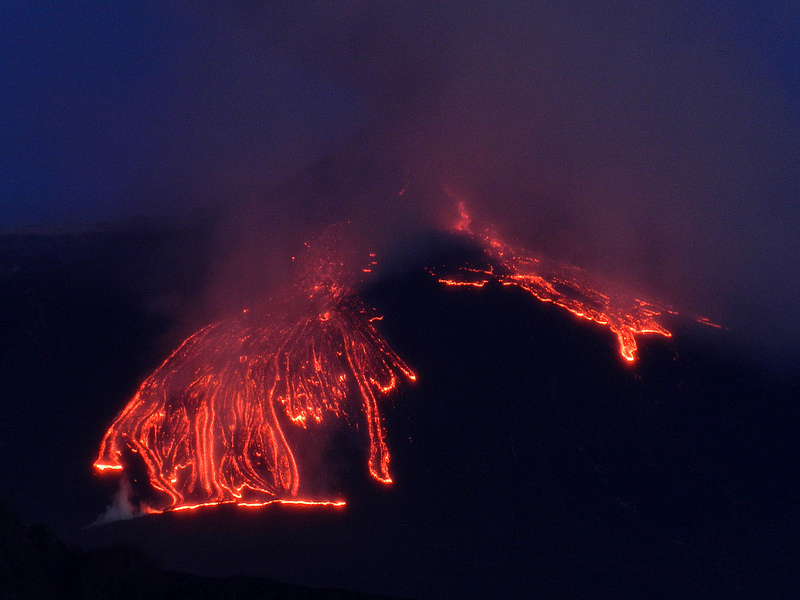5 Volcanoes You Should Keep Your Eye On


Italy's Mount Etna and Mexico's Popocatépetl volcano have been huffing and puffing their way into the news recently, spewing plumes of ash and dribbling lava in the latest flare-ups of eruptive activity that have been going on for years in the case of both volcanoes.
While larger eruptions, such as the Philippines's Pinatubo in 1991 and the 1980 blast of Mount St. Helens in Washington, are more famous for the disruptions they caused, some near-constant eruptions have their own associated hazard, posing threats to nearby communities and potential disruptions to air traffic from ash plumes.
Here are five volcanoes that don't always get a lot of fanfare, but have been quietly (or maybe not so quietly) rumbling and spitting up volcanic material continuously for years — even decades — in order of the number of years they've been erupting.
5. Sangay in Ecuador – 94 years
The modern volcano structure, which reaches a height of 17,158 feet (5,230 meters), dates back about 14,000 years and was built within horseshoe-shaped calderas, or volcanic depressions, of two previous edifices that collapsed and cause avalanches. The earliest report of a historical eruption here was in 1628; then more or less continuous eruptions were reported from 1728 until 1916. The volcano started up again in 1934 and hasn't stopped since.
4. Santa María, Guatemala – 101 years
Santa María is a 12,375-foot (3,772-meter) tall stratovolcano that towers over Guatemala's Pacific coastal plain. It erupted catastrophically in 1902, one of the largest eruptions of the 20th century, causing severe damage throughout southwestern Guatemala and carving a crater on the volcano's flank. A lava-dome complex, calledSantiaguito, has been forming in the crater since 1922.
Get the world’s most fascinating discoveries delivered straight to your inbox.
Some of the world's most active volcanoes have nearby communities, but would you live near an active volcano?
3. Stromboli, Italy - 108 years
Stromboli is the tip of a massive underwater volcano that has been erupting nearly continuously for more than2,000 years. The explosive style of eruption displayed by it and other volcanoes is known as "Strombolian. A 2002 eruption caused a small tsunami and damaged a village on the island, which lies off the coasts of Italy and Sicily.
2. Mount Etna, Italy - 109 years
Dating back to 1500 B.C., the volcano has erupted around 200 times. The mountain is currently around 10,958 feet (3,340 m) high and is the largest active volcano in Europe. The most violent eruption in the history of Mount Etna occurred in March of 1669. The volcano spewed molten rock for days on end, the eruption finally stopped at the end of April that year.
1. Mount Yasur, Vanautu - 111 years
This stratovolcano is part of the archipelago nation of Vanuatu in the South Pacific.Yasur has been erupting nearly continuously for over a century, and its eruptions, which often occur several times an hour, are classified as Strombolian or Vulcanian (a relatively low-level type of eruption).
Editor's note: This story was corrected to note that Mount Pinatubo is in the Philippines.



